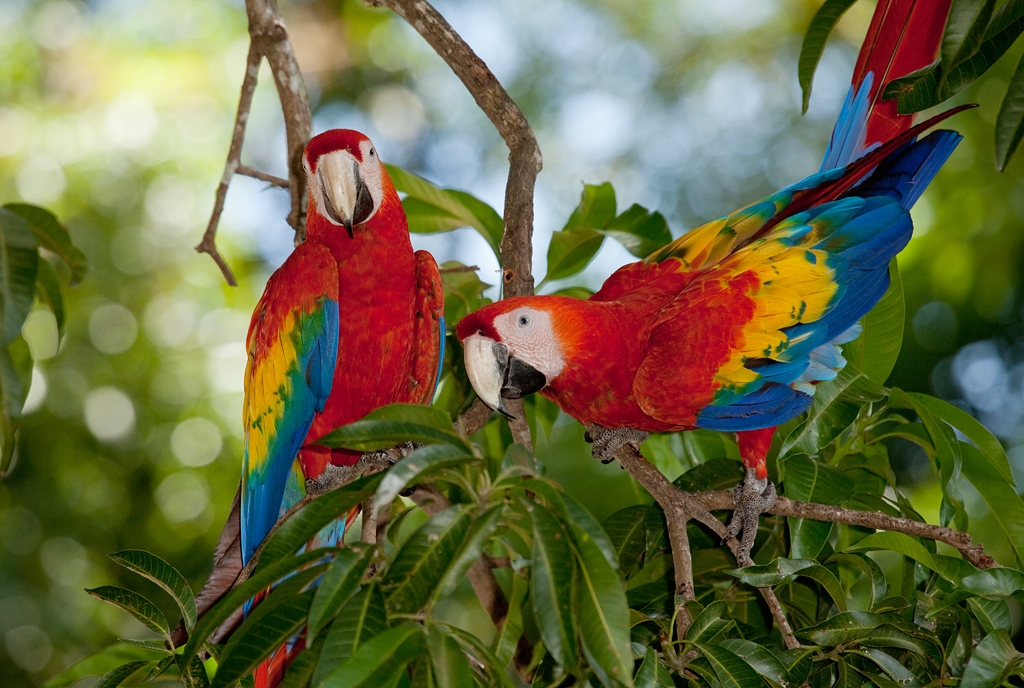This great wilderness is a humid, tangled jungle that rings with the cries of cicadas, parrots and monkeys. The peoples who inhabit the river banks of the mightiest river in the world look upon the waterways that snake through their jungle as thoroughfare, playground and food source.High in the Peruvian Andes, a trickle of meltwater is the starting point for the Amazon’s 4000 mile (6400km) journey across the bulbous headland of South America. Along a course carpeted with the greatest rain forest on Earth, the river is joined by more than 1000 tributaries, draining a vast land basin almost the size of Australia. Some of the tributaries – notably the rivers Negro, Madeira and Tapajos – are giants in themselves and swell the main river to such a size that boats may take up to an hour to ferry passengers across.
The mouth of the Amazon River was discovered in 1500, when a Spanish expedition led by Vincente Pinzon sailed up it to a point 50 miles (80km) from the sea. Forty years later another Spanish expedition, of 50 men under the command of Francisco de Orellana, achieved an epic journey from the distant Andes by way of the Napo River and the Amazon mainstream to the Atlantic. By the 19th century, naturalists finally began to probe the secrets of the rivers and the surrounding rain forest. Between 1848 and 1859, the British naturalist Henry Bates collected thousands of insect species entirely new to entomology, and the botanist Richard Spruce gathered some 7000 new plant specimens.
The water’s edge offers a fine vantage point from which to observe the Amazon’s exotic animal species. Colourful kingfishers, egrets and ibises haunt the river banks, while parrots and toucans feed on nuts and fruit in the tree tops above until monkeys, hurling through the branches, chase them away. A sudden splash might be an iguana plunging into the water, shaken from an overhanging branch by a plodding sloth or alarmed by a grazing capybara – at up to 4ft (1.2m) long, it is the largest rodent in the world.

Pairs or groups of vividly coloured scarlet macaws can be seen at sunrise soaring over the tree tops to their feeding ground. At 3ft (1m) high, this is the largest South American parrot.

More than 2000 species of fish are known to thrive in the waters of the Amazon, ten times the number found in all Europe’s rivers combined and three times as many as in Africa’s mighty Zaire River. They range from dainty, brightly coloured tetra and angelfish to deadly stingrays and electric eels. While some fish, such as the tambaqui, feed on fallen nuts, others are fierce carnivores. The largest of these, the pirarucu, grows to 10ft (3m) in length and weighs, on average, 440lb (200kg).

Dolphins patrol the waters of the Amazon Basin, snatching fish between their long, toothed jaws. Visibility in the silt-laden river is poor, so dolphins use echo-location – a ‘sonar’ system of high-frequency sounds – to track their prey.

The most notorious fish of all is the red-bellied piranha. Although it grows to a modest maximum length of only 12in (30cm), it hunts in shoals, and the razor-sharp teeth of a group of red-bellied piranha can reduce a large, slow-moving mammal to a bare skeleton in seconds, particularly If it is old or wounded. Contrary to the popular belief, this behavior is exceptional in piranhas, for their staple diet is in fact fish, supplemented with seeds and fruit.

At least 20 species of piranha dwell in the waters of the Amazon Basin, some measuring up to 2ft (60cm) long. The most feared variety is the 1ft (30cm) long red-bellied piranha, whose razor-sharp interlocking teeth can rip flesh to shreds in seconds. Its external nostrils are super-sensitive to the scent of blood. Within seconds, they can detect the presence of a wounded animal. Then a shoal of fish, sometimes numbering thousands, will quickly move in for the kill.
The largest predator in the Amazon basin is the black caiman, an alligator that can measure up to 15ft (4.6m) long and which has been known to attack humans. Its diet typically consists of aquatic mammals, such as the manatee, and forest dwellers such as capybaras and tapirs, which are plucked from the water’s edge while drinking.

At 550lb (250kg) or more, the anaconda is the undisputed heavyweight of snakes. This 33ft (10m) long giant will take deer, tapir and even jaguars as they drink at the water’s edge. The anaconda usually waits in the water until its prey comes within reach, then seizes the prey between its jaws, winding itself more and more tightly around the victim until it is crushed to death or suffocated.

The bizarre camouflage of the matamata turtle enables it to lie hidden among the debris on the riverbed while awaiting a passing ‘snack’.

The enormous diversity of plant and animal species in the Amazon jungle makes it the greatest natural resource in the world. In 1 acre (0.4ha) of primary forest alone there are about 60 different tree species, 15 times the number found in temperate forests. Such is the density of plant life that, it is estimated, 900 tons of vegetation grow in just 2½ acres (1ha) of land. Yet the jungle is far from being an impenetrable mass. At ground level in the heart of the forest there is comparatively little undergrowth because the canopy of foliage blocks out growth-enhancing light. But, whenever a tree topples, the undergrowth bursts into bloom, so continuing the life cycle of this ancient and enduring habitat.



































